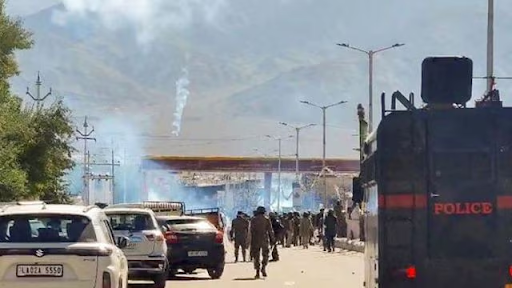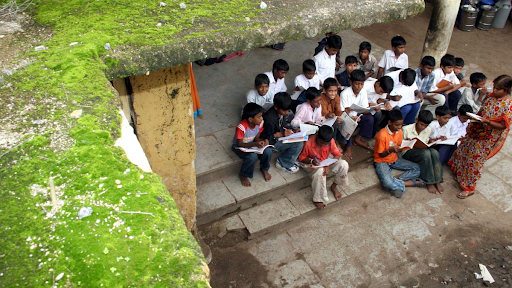Description

Disclaimer: Copyright infringement not intended.
Context:
- NITI Aayog has announced the launch of the ‘NITI GearShift Challenge’
NITI GearShift Challenge
- It is a hackathon launched as part of the e-FAST India initiative.
- It is being organised in collaboration with IIM Bangalore, Smart Freight Centre India, WRI India and other institutions.
- The hackathon will be held in two rounds.
Aims:
- To foster innovative business models for the adoption of zero-emission trucks in India, addressing the nation’s pressing economic and environmental challenges.
- To develop innovative business models that address financial, technical, and operational challenges in the adoption of electric trucks.
Invitees:
- Students, transport service practitioners, academics, and researchers.
What is e-FAST?
- e-FAST India (Electric Freight Accelerator for Sustainable Transport – India) is the country's first platform to facilitate collaboration between government stakeholders and private sector partners, which are Original Equipment Manufacturers (OEMs), Logistic Service Providers (LSPs), financers, producers, and Charge Point Operators (CPOs), to shape strategies and actions that support freight electrification at scale.
- Launched on September 7, 2022 by Niti Aayog and supported by World Resources Institute India.
Focus Areas
Technology and Innovation
- Track the latest developments in freight electric technologies and private sector innovation.
Market Acceleration
- Develop strategies to address barriers to adoption, incentivize manufacturing and avenues for experimentation and deployment.
Public Policy Support
- Support decision makers by identifying suitable incentive structures, public investment and resources to stimulate demand and industry innovation.
Why is Freight Electrification Important?
- Predominance of Road for Goods Movement:
- Road transport accounts for approximately 65-70% of freight movement in India, significantly more than rail and other modes.
- Freight Commercial Vehicles:
- Freight commercial vehicles, including trucks and lorries, make up around 6-8% of all registered vehicles in India. The total number of registered vehicles is over 300 million.
- Emissions from Road Freight Vehicles:
- Road freight transport is estimated to contribute around 15-20% of total greenhouse gas emissions in the transportation sector, with heavy-duty trucks being the primary source of these emissions.
E-FREIGHT LANDSCAPE IN INDIA
Ambitious Government targets:
- The Government of India (GOI) has set an ambitious electric vehicle (EV) sales target of 30 percent for private automobiles, 70 percent for commercial vehicles, and 80 percent for two-wheelers (2Ws) and three-wheelers (3Ws) by 2030.
Government supports:
High EV adoption rate:
- The demand and supply side incentives has led to innovations in the automobile sector and the adoption of nearly 1.9 million EVs by the end of 2022.
State Wise commitments:
- Andhra Pradesh, Uttar Pradesh, Assam, and Madhya Pradesh have committed to phasing out all fossil-fuel-based commercial fleets by 2030.
- Notably, Maharashtra, Punjab, Andhra Pradesh, Haryana, Madhya Pradesh, Andaman & Nicobar Islands, and Chandigarh have implemented policies specifically targeting the electrification of vehicles, such as garbage trucks, operated by a public authority.
- In terms of subsidies for buying medium- and heavy-duty electric vehicles, Haryana is the only state that offers incentives for e-tractors.
Challenges associated with freight electrification, particularly for electric medium- and heavy-duty trucks (e-MHDTs, hereafter written in short forms):
High Upfront Purchase Cost
- Electric trucks (e-MDTs and e-HDTs) are significantly more expensive than diesel alternatives.
- e-MDTs cost about twice as much, while e-HDTs cost approximately three times as much.
- Battery costs contribute to 40-70% of the e-HDT price, due to larger battery requirements for longer distances and heavier loads.
Charging Infrastructure Technology and Availability
- A comprehensive charging network is essential for the adoption of electric trucks.
- High-powered chargers are needed for optimal charging speeds, resulting in significant infrastructure investments.
- Charging needs differ between medium/long-haul trucks (requiring quick recharges) and local delivery fleets (often charged overnight).
- Fast charging can lead to battery degradation, particularly in tropical climates, affecting battery performance and increasing long-term vehicle costs.
Evolutionary Technology and Availability of Models
- Limited availability of electric truck models discourages companies from transitioning away from diesel.
- The electric truck market faces a "chicken and egg" dilemma: low demand leads to fewer models, which in turn maintains low demand.
Payload vs Battery Capacity
- e-MHDTs require larger batteries for long-distance travel, which increases costs and weight.
- The weight of larger batteries can reduce the truck's payload capacity, impacting efficiency in goods movement.
- Balancing battery size with payload capacity is a critical challenge for the design and utility of electric trucks.
Way ahead
Incentivizing Investment
- Governments can provide subsidies, tax credits, or grants to offset the high upfront costs of e-MHDTs and charging infrastructure.
- Financial incentives can stimulate demand and encourage fleet operators to transition to electric vehicles.
Expanding Charging Infrastructure
- Develop comprehensive charging networks, particularly in strategic locations such as highways and logistics hubs.
- Collaborate with private companies to establish fast-charging stations that cater specifically to freight needs.
- Encourage innovations in charging technologies that minimise battery degradation, such as smart charging solutions.
Encouraging Model Development
- Support manufacturers in developing a wider range of electric truck models through R&D grants and partnerships.
- Foster regulatory frameworks that create a clear pathway for electric vehicle adoption, including emissions standards and fuel economy regulations.
Enhancing Battery Technology
- Invest in research for advanced battery technologies that reduce weight, cost, and degradation issues, such as solid-state batteries or alternative chemistries.
- Explore battery leasing models to lower initial costs and ensure continuous battery performance management.
Education and Training
- Provide training programs for fleet managers and operators on the benefits and operation of electric trucks.
- Raise awareness about the long-term savings and environmental benefits of transitioning to electric vehicles.
Promoting Collaboration
- Encourage partnerships between stakeholders, including manufacturers, fleet operators, government bodies, and research institutions, to share knowledge and resources.
- Engage in public-private partnerships to accelerate the deployment of charging infrastructure and technology advancements.
Implementing Pilot Programs
- Initiate pilot programs to test electric trucks in real-world conditions, providing valuable data on performance, costs, and operational feasibility.
- Use pilot results to refine business models and inform broader rollout strategies.
Conclusion:
- By addressing these areas, stakeholders can facilitate the transition to electrified freight transportation, leading to reduced emissions and improved efficiency in the logistics sector.
Sources
https://www.newsonair.gov.in/niti-aayog-launches-niti-gearshift-challenge-as-part-of-e-fast-india-initiative/#:~:text=NITI%20Aayog%20has%20announced%20the,pressing%20economic%20and%20environmental%20challenges
https://www.google.com/search?q=e-FAST+India&rlz=1CDGOYI_enIN1079IN1079&hl=en-GB&sourceid=chrome-mobile&ie=UTF-8
https://wri-india.org/sites/default/files/Accelerating%20Freight%20Electrification%20in%20India%2029th%20Online%20version%201.pdf
https://pib.gov.in/newsite/printrelease.aspx?relid=116719
|
PRACTICE QUESTION
Q) Discuss the key challenges faced in the electrification of the freight sector in India. Evaluate the potential strategies that can be implemented to overcome these challenges and promote the adoption of electric vehicles in logistics.(250 words)
|











